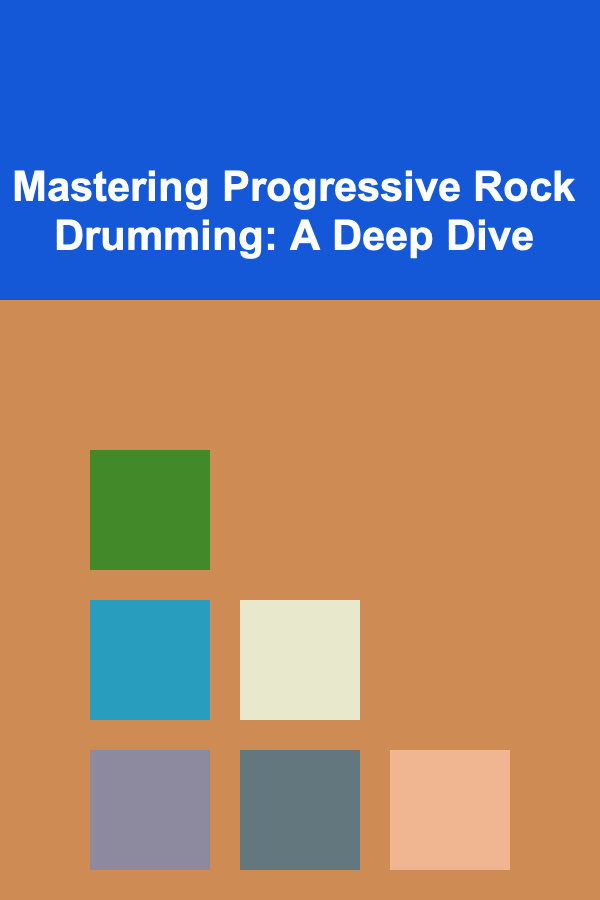
How To Shoot Fashion Photography
ebook include PDF & Audio bundle (Micro Guide)
$12.99$7.99
Limited Time Offer! Order within the next:

Fashion photography is an art form that captures the elegance, style, and glamour of fashion, often with the goal of promoting clothing, accessories, or lifestyle brands. It involves not just technical expertise but also creativity, attention to detail, and an understanding of trends and aesthetics. Whether you're a seasoned photographer or a beginner, mastering fashion photography requires both technical skills and an understanding of the subject matter you're working with. In this article, we will explore the essential techniques, concepts, and equipment that can help you become proficient in the field of fashion photography.
Understand the Concept of Fashion Photography
At its core, fashion photography is all about creating images that highlight clothing, accessories, and the human form in a visually appealing way. However, fashion photography goes beyond simple product shots. It's about telling a story, conveying an emotion, and capturing the personality and essence of the model and their surroundings. Whether it's editorial fashion photography, commercial advertisements, or runway shots, fashion photography plays a vital role in shaping the public perception of trends, styles, and beauty.
Key Elements of Fashion Photography:
- Model: The model is central to any fashion shoot, acting as the vessel through which the designer's creations are brought to life. It's important to communicate with your model and understand their poses, expressions, and movement to create dynamic images.
- Clothing and Accessories: These are the focal points of the shoot. Fashion photography aims to present these elements in a way that enhances their appeal, focusing on texture, design, and form.
- Lighting: Proper lighting can make or break a fashion photo. It can highlight the contours of the clothing, emphasize the model's features, and set the overall mood of the shoot.
- Background and Location: The setting or backdrop plays a significant role in conveying the theme and mood of the fashion story you're trying to tell. A minimalistic studio background, a cityscape, or a natural outdoor setting can all contribute to different visual narratives.
Develop Your Style and Creative Vision
Fashion photography is highly subjective, and every photographer has a unique approach. While learning from others is essential, you should also cultivate your style, creative vision, and the aesthetic you want to bring to your work. This will help you create consistent and recognizable images.
Here are some tips to help you develop your own style:
- Analyze other photographers: Study the work of famous fashion photographers like Annie Leibovitz, Helmut Newton, or Richard Avedon. Pay attention to how they use lighting, composition, and angles. What is it about their photos that draws you in? What elements can you incorporate into your own work while maintaining your unique voice?
- Experiment with different styles: Fashion photography can range from high-concept editorial shoots to natural, candid images. Try experimenting with different approaches, whether that means creating a cinematic look or embracing raw, unpolished images.
- Work with mood boards: Mood boards are a great way to define your aesthetic. They help you gather visual inspiration that aligns with the vibe you're going for. You can curate images, color palettes, textures, and themes that will guide your shoot.
Master the Technical Aspects of Photography
While creativity is essential in fashion photography, it's equally important to understand the technical side. Your ability to work with lighting, your camera settings, and post-processing software will ultimately determine the quality of your photos.
A. Equipment
Fashion photography requires a certain set of equipment to achieve the desired results. Although equipment alone does not make a photographer, it can help in achieving high-quality results when used correctly.
Camera
- DSLRs or Mirrorless Cameras: Professional fashion photographers often use cameras with interchangeable lenses, such as DSLRs or mirrorless cameras. These cameras offer excellent image quality and flexibility.
- Full-frame Sensors: A full-frame sensor provides more depth of field and better image quality, especially in low-light situations. This is crucial in fashion photography where every detail matters.
- Resolution: Look for cameras with a high resolution, as this will allow you to capture fine details and textures, which are crucial when photographing fabric, clothing, and accessories.
Lenses
- Prime Lenses (50mm, 85mm, etc.): Prime lenses are a favorite among fashion photographers due to their sharpness and ability to create beautiful bokeh (blurred background). An 85mm lens, for example, is excellent for portraits.
- Zoom Lenses (24-70mm): These lenses provide versatility, allowing you to switch between wide-angle and telephoto shots without changing lenses.
- Wide Aperture Lenses: Lenses with a wide aperture (f/1.2, f/1.4, etc.) are ideal for achieving a shallow depth of field, which makes the subject stand out against a blurred background.
Lighting
Lighting is one of the most important aspects of fashion photography. It can define the mood and bring attention to the clothing and model's features.
- Natural Light: If you're shooting outdoors or in a space with abundant natural light, use it to your advantage. The soft, diffused light of early mornings or late afternoons can create stunning effects on the subject.
- Studio Lighting: For indoor shoots, you can use studio lighting setups like strobes or continuous lights. Lighting kits often include softboxes, umbrellas, and reflectors to control the light and prevent harsh shadows.
- Key Light, Fill Light, and Backlight: A standard lighting setup often includes a key light (main light), a fill light (to soften shadows), and a backlight (to create separation between the subject and background). Experiment with the placement of lights to achieve different effects.
Reflectors and Diffusers
Reflectors bounce light back onto the model, softening harsh shadows and enhancing the overall look. Diffusers can be used to soften light when shooting outdoors or in environments with hard, direct light. These tools are essential for creating a controlled, flattering light environment.
B. Camera Settings
When shooting fashion photography, understanding your camera settings is crucial for achieving the desired outcome.
- Shutter Speed: A faster shutter speed (1/500 or higher) is useful for freezing fast movement, such as when the model is walking or jumping.
- Aperture: A wide aperture (f/2.8, f/1.4) creates a shallow depth of field, blurring the background and focusing attention on the subject. For full-body shots, you may want to close the aperture slightly to keep the entire model in focus.
- ISO: Keep the ISO as low as possible (100 or 200) to avoid noise. In low-light conditions, increase the ISO to maintain proper exposure without compromising the image quality.
- White Balance: Correct white balance ensures that the colors in the image appear natural. Adjust the white balance depending on the type of light you're working with.
Directing Your Model
A significant part of fashion photography is working with the model to create striking poses and expressions that highlight the clothing and accessories. Good direction helps to elicit the best performance from your model.
- Establish Clear Communication: Before the shoot, discuss the concept, the desired mood, and the types of poses you want to achieve. Share your vision and encourage the model to ask questions.
- Guide Poses: Models may not always know exactly what you're looking for. It's your job to help them find their best angles, whether that means adjusting their posture, face, or hand placement.
- Capture Natural Movements: Fashion photography doesn't always have to be stiff or overly posed. Sometimes, the best shots come from candid moments, like when the model is walking, adjusting their clothes, or interacting with the environment.
- Focus on the Details: Pay attention to the small details, such as how the fabric drapes or how the accessories catch the light. These subtleties can elevate a fashion image from good to great.
Styling, Hair, and Makeup
Fashion photography relies heavily on the styling, hair, and makeup to bring the entire vision together. Collaborate with stylists, makeup artists, and hairdressers to ensure the look complements the overall theme.
- Clothing and Accessories: Work closely with the fashion stylist to ensure the clothes and accessories align with the desired aesthetic. Consider the color palette, textures, and overall mood of the shoot.
- Hair and Makeup: Hair and makeup should accentuate the model's features and support the theme of the shoot. The makeup should be carefully applied to avoid shine and ensure the model's features are highlighted.
- Wardrobe Changes: Plan for multiple outfit changes during the shoot. A good wardrobe stylist can ensure the model's clothing fits well and complements the shoot's concept.
Post-Processing and Retouching
Once you've captured the perfect shots, the work doesn't end there. Post-processing is an essential step in fashion photography. Use photo editing software like Adobe Lightroom or Photoshop to refine your images.
A. Color Grading
Color grading plays a significant role in setting the tone of your fashion photos. You can adjust the contrast, saturation, and hue to create a mood that complements the style of the clothing and the overall theme of the shoot.
B. Skin Retouching
In fashion photography, flawless skin is often a desired aesthetic. Use tools like frequency separation and healing brushes to remove blemishes or smooth skin without losing texture. However, it's important not to over-retouch, as this can make the image look unnatural.
C. Sharpness and Clarity
Ensure the clothing, model, and accessories are sharp and clear. Use sharpening techniques to enhance details like the fabric texture or the model's eyes, making sure nothing appears blurry unless it's intentional.
Conclusion
Fashion photography is a challenging but incredibly rewarding genre that combines technical expertise with artistic creativity. By understanding the core principles of lighting, composition, equipment, and model direction, you can create striking images that tell a compelling fashion story. With practice, experimentation, and collaboration, you'll find your unique voice in the world of fashion photography, capturing the ever-evolving nature of style, beauty, and culture.
Reading More From Our Other Websites
- [Home Cleaning 101] How to Clean a Home After a Party: Quick and Effective Tips
- [Home Cleaning 101] How to Clean an Oven: Step-by-Step Guide for a Spotless Appliance
- [Personal Investment 101] How to Understand and Successfully Buy Government Bonds for Portfolio Stability
- [Home Pet Care 101] How to Keep Your Pet Calm During Home Renovations or Changes
- [Home Family Activity 101] How to Make Homemade Friendship Bracelets
- [Horseback Riding Tip 101] Best Trail Riding Routes for Advanced‑Intermediate Riders in the Rocky Mountain Region
- [Home Budget Decorating 101] How to Add Style to Your Home with Thrift Store Finds
- [Home Holiday Decoration 101] How to Choose the Perfect Christmas Tree Topper for Your Home Decor Style
- [Scrapbooking Tip 101] Creative Themes to Transform Your Scrapbook Album
- [Personal Care Tips 101] How to Reduce Puffiness with Eye Cream

How to Prepare for Tax Season Effectively
Read More
How to Set Up a Checklist for Migrating Multimedia Content (Images, Videos, etc.)
Read More
How to Set Up an Emergency Fund for Your Home Budget
Read More
How to Turn Your Hobby into a Profitable Business
Read More
How To Engage with Local Art and Music
Read More
Mastering Progressive Rock Drumming: A Deep Dive
Read MoreOther Products

How to Prepare for Tax Season Effectively
Read More
How to Set Up a Checklist for Migrating Multimedia Content (Images, Videos, etc.)
Read More
How to Set Up an Emergency Fund for Your Home Budget
Read More
How to Turn Your Hobby into a Profitable Business
Read More
How To Engage with Local Art and Music
Read More